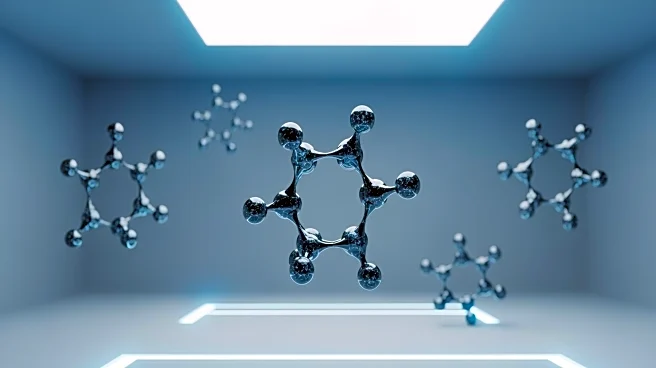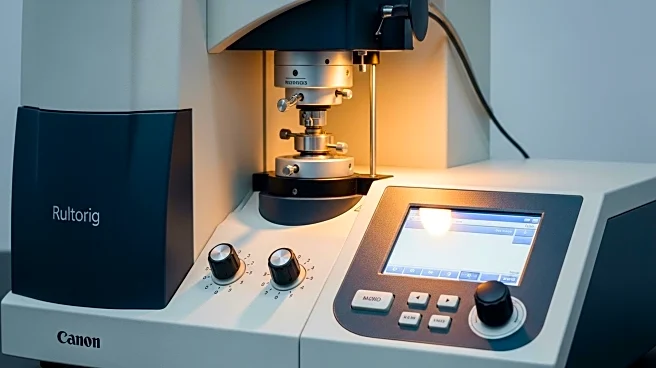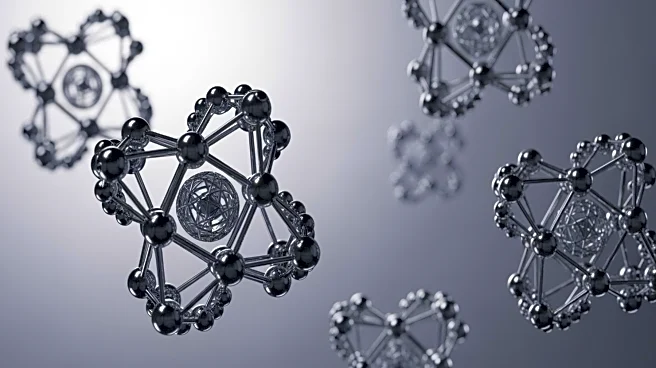What's Happening?
Researchers at The University of Manchester have discovered that water, when confined to spaces only a few atoms thick, exhibits properties similar to advanced materials like ferroelectrics and superionic liquids. This finding contradicts previous beliefs
that confined water becomes 'electrically dead' when measured perpendicular to surfaces. Instead, the study reveals that water's electrical response increases dramatically in the parallel direction. Using scanning dielectric microscopy, the team found that water's dielectric constant can reach values close to 1,000 when confined to 1-2 nanometers, compared to its bulk value of around 80. This transformation is attributed to the disruption of water's hydrogen-bond network at the molecular scale, allowing dipoles to align more easily with electric fields.
Why It's Important?
The discovery of water's unique electrical properties at the nanoscale has significant implications for various fields, including physics, chemistry, and technology. Understanding these properties is crucial for the development of advanced batteries, microfluidics, nanoscale electronics, and biological applications. The research challenges existing perceptions of water, revealing its potential as a material with extraordinary capabilities. This could lead to innovations in energy storage and electronic devices, as well as a deeper understanding of water's role in natural and engineered systems.
What's Next?
Further research is likely to explore the practical applications of these findings in technology and industry. Scientists may investigate how these properties can be harnessed in the design of new materials and devices, particularly in energy storage and electronics. The study opens new avenues for exploring the behavior of other substances at the nanoscale, potentially leading to breakthroughs in material science and engineering.
Beyond the Headlines
The discovery highlights the importance of revisiting well-studied substances like water with new techniques and perspectives. It underscores the potential for unexpected findings in familiar materials, encouraging a reevaluation of their properties and applications. This research may also inspire ethical discussions about the manipulation of natural substances at the atomic level and its implications for sustainability and environmental impact.













